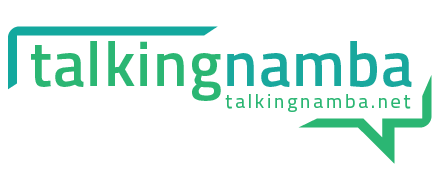Bibliography
Booker, G., Bond, D., Sparrow, L., & Swan, P. (2003) Teaching Primary Mathematics (3rd Edition). Frenchs Forest NSW: Pearson Prentice Hall.
Christie, M. (1985). Aboriginal perspectives on experience and learning: The role of language in Aboriginal education. Malvern, Victoria: Deakin University Press.
Christie, M. (2007, November). Maths as a cultural practice in a remote Aboriginal community. Notes for a presentation to the SiMERR National Summit, Canberra.
Christie, M., & Greatorex, J. (2004). Yolngu life in the Northern Territory of Australia: The significance of community and social capital. Asia-Pacific Journal of Public Administration, 26(1), 55-70.
Commonwealth of Australia (2000a). Numeracy, a priority for all: Challenges for Australian schools. Canberra: Department of Employment, Training and Youth Affairs.
Commonwealth of Australia (2000b). The national Indigenous English literacy and numeracy strategy. Canberra: Department of Employment, Training and Youth Affairs.
Commonwealth of Australia (2002). National report on indigenous education and training 2001. Canberra: Commonwealth of Australia.
Currah, J., Felling, J., & MacDonald, C. (2005) All hands on deck. Maths games using cards and dice. Grades 1 – 9 (Vol 2). Edmonton, Alberta, Canada.
D’Ambrosio, U. (1985). Ethnomathematics and its place in the history and pedagogy of mathematics. For the Learning of Mathematics, 5, 44-48.
Efthymiades, D., Morony, W., & Roberts, J. (2000). Numeracy development of indigenous students: An introduction to research. Paper presented at the ACER Research Conference, Improving Numeracy Learning: What does the research tell us?15-17 October, 2000, Brisbane.
Frigo, T., & Simpson, L. (2001). Research into the numeracy development of Aboriginal students: Implications for the NSW K-10 mathematics syllabus: New South Wales: Board of Studies.
Graham, B. (1988b). Mathematical education and Aboriginal children. Educational Studies in Mathematics, 19, 119-135.
Harris, S. (1978). Traditional Aboriginal education methods applied in the classroom. Australian Journal of Early Childhood Education, 3(4), 17-23.
Howard, P., Perry, B., Lowe, K., Ziems, S., & McKnight, A. (2003). Mathematics in indigenous contexts: A case study. Paper presented at the 26th annual conference of the Mathematics Education Research Group of Australasia (MERGA). Geelong.
Ladson-Billings, G. (1995). Towards a theory of culturally relevant pedagogy. American Educational Research Journal, 32(3), 465-491.
Marika, R. (1999). The 1998 Wentworth Lecture. Australian Aboriginal Studies, 1(3), 3-9
Martin, K. (2008). The intersection of Aboriginal knowledges, Aboriginal literacies, and New Learning pedagogy for Aboriginal students. In A. Healy (Ed.), Multiliteracies and diversity in education. New pedagogies for expanding landscapes. Melbourne: Oxford University Press.
Matthews, S., Howard, P., & Perry, B. (2003). Working together to enhance Australian Aboriginal students’ mathematics learning. Paper presented at the 26th annual conference of the Mathematics Education Research Group of Australasia (MERGA). Geelong.
McConaghy, C. (2000). Rethinking Indigenous education: Culturalism, colonialism and the politics of knowing. Flaxton, Queensland: Post Press.
Mellor, S., & Corrigan, M. (2004). The case for change: A review of contemporary research on Indigenous education outcomes. Camberwell, Victoria: Australian Council of Education Research (ACER).
Northern Territory Government. (2009). Closing the gap of indigenous disadvantage. Progress report. Darwin: Department of the Chief Minister.
NSW Department of Education and Training. (1999). Developing efficient numeracy strategies: Stage 1. Bankstown: NSW Department of Education and Training.
NSW Department of Education and Training. (2003). Developing efficient numeracy strategies: Stage 2. Bankstown: NSW Department of Education and Training.
Perso, T. (2003). Improving Aboriginal Numeracy. Perth: Mathematics, Science & Technology Education Centre, Edith Cowan University.
Rogoff, B. (1995). Observing sociocultural activity on three planes: participatory appropriation, guided participation, and apprenticeship. In J. V. Wertsh, P. D. Rio & A. Alvarez (Eds.), Sociocultural Studies of Mind (pp. 139-164). New York: Cambridge University Press.
Siemon, D. (2000). Researching numeracy in the middle years: The experience of the Middle Years Numeracy Project. Paper presented at the ACER Research Conference, Improving Numeracy Learning: What does the research tell us? 15-17 October, 2000, Brisbane.
Siemon, D. (2006). Assessment for common misunderstandings. Commissioned web-based materials prepared for the Victorian Department of Education and Training, from http://www.education.vic.gov.au/studentlearning/teachingresources/maths/common/default.htm
Siemon, D. (2009). Developing mathematics knowledge keepers – Issues at the intersection of communities of practice. Eurasia Journal of Mathematics, Science and Technology Education, 5(3), 221-234.
Siemon, D., Enilane, F., & McCarthy, J. (2005). Final Report of the NT Strategic Numeracy Research and Development Project 2003-2004: Supporting Indigenous Student Achievement in Numeracy. Unpublished report submitted to NT DEET and DEST, January.
Takahashi, A., & Yoshida, M. (2004). Ideas for establishing lesson-study communities.
Teaching Children Mathematics, 10 (9), 436-443.
Warren, E., Cooper, T. J., & Baturo, A. R. (2008). Bridging the educational gap: Indigenous and non-Indigenous beliefs, attitudes and practices in a remote Australian school. Educational Practice and Theory, 30(1), 41-56.
Watson, H., & Chambers, D. W. (1989). Singing the land, signing the land. Geelong, Victoria: Deakin University Press.
Wenger, E. (1998). Communities of practice: Learning, meaning and identity. Cambridge, UK:
Cambridge University Press.
Willis, S. (2000). Strengthening numeracy: Reducing risk. Paper presented at the ACER Research Conference, Improving Numeracy Learning: What does the research tell us? 15-17 October, 2000, Brisbane.
www.curriculum.edu.au/maths300
York, F. A., & Henderson, L. (2003). Making it possible: The evolution of RATEP – A community-based teacher education program for indigenous peoples. The Australian Journal of Indigenous Education, 32, 77-84.
Zevenbergen, R., Mousley, J., & Sullivan, P. (2004). Making the pedagogic relay inclusive for indigenous Australian students in mathematics classrooms. International Journal for Inclusive Education, 8(4), 391-405.
Prepared by the BCC Research Team led by Prof Dianne Siemon – RMIT University, March 2010
